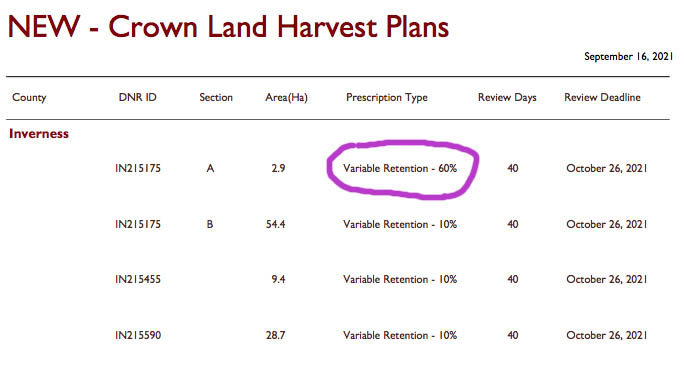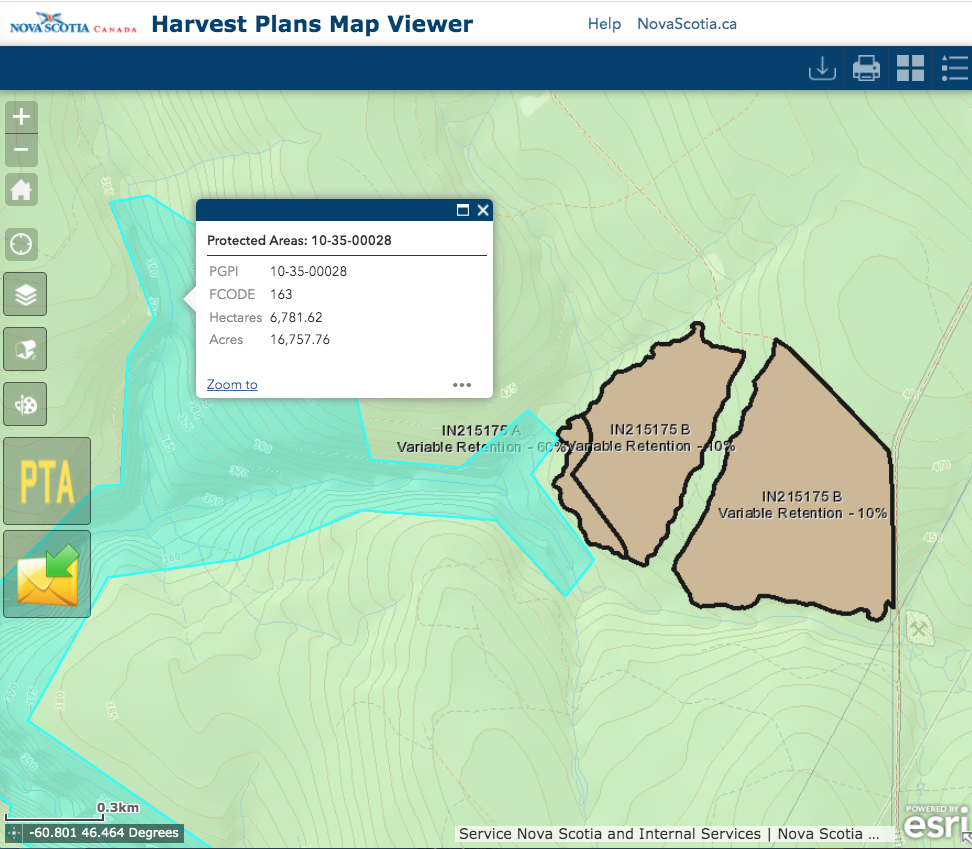Like many I know, I am pretty worn down by L&F/Big Forestry’s continued assault on our Crown lands and it’s a challenge with each new harvest announcement even to begin to ‘check them out’.
(What was once DNR and then L&F now comes under Natural Resources and Renewables (NRR), however I don’t want to ascribe Big Forestry pandering to the new Department and Government. So I’ll keep “L&F” for the rest of this post, referring to its behaviour under the past government or two, continued for now by the L&F bureaucracy.)
Also L&F’s Forestry Maps continues to reiterate with each announcement its June 4, 2021 directive that all they will entertain to consider is “information currently not known to the department at a site level that is being proposed for harvest.”
Regardless, I usually take a glance, at least, at new Harvest Notices. This caught my eye on the the latest one (issued Sep 16, 2021): 60% Retention for a ‘proposed’ Variable Retention harvest.
I could be wrong, but I don’t recall seeing a % Retention that high for a proposed Variable Retention harvest which have routinely been in the range 10-30% . The 60% proposal is for a very small area which on its own raises some alarm bells as highlighted by Bev Wigney (view NSFN Post Jan 10, 2021). So I had a look at it on the HPMV.
I didn’t have to dig very far to find something unsettling: as well as I can figure, most or all of the 2.9 ha proposed for 60% retention lies within 100 m of a Protected Area.
Harvesting close to PAs has been a sore point over some proposed harvests in the past (view examples).
When L&F made their first, short-lived stab on Sep 11, 2018 at responding to the Lahey Recommendations (released on Aug 21, 2018), it included ” a 100-metre setback (buffer) between any clearcut treatment” and any of the province’s protected areas” ; from CBC Sep 17, 2018:

From CBC Sep 17, 2018
So is this L&F’s new criterion for a buffer zone with Protected Areas? Areas within 100 m of a Protected Area can be harvested as a Variable Retention cut with 60% (or more, I suppose) retention?
The 60% figure is interesting as it is the cutoff point for DNR’s 2012 definition of a clearcut, although that is well above the 20% retention they came up with in 2020 (view NSFN Post Oct 18, 2020).
So perhaps L&F wants to be able to claim that 60% retention is not a clearcut by any of their definitions. The 2012 DNR definition:
A clearcut is a forest harvest where less than 60% of the area is sufficiently occupied with trees taller than 1.3 metres.
I hope the logging is precise enough to ensure that 40% is cut, not 41% – the latter would mean there is 59% retention and the cut could be called “a clearcut next to a protected area”. Oh dear.
The line between whats a clearcut and what’s not for Variable Retention harvests seems not to be well defined in any jurisdiction, but one study by the federal and university researchers found that the pattern of cutting has a big influence on how it affects nitrogen cycling and that “High levels of retention (> 70%) were required to maintain uncut stand N-cycling characteristics.” That level could be expected to be even higher for the nutrient-depleted forest soils that cover more than 60% of the Nova Scotia landscape (re: Miller et al., 2007, Noseworthy 2011, Keys et al., 2016).
I suppose these sort of nuances will be fully vetted before the Lahey Recommendations are finally implemented.
In the meantime, of course, the status quo and the interests of Big Forestry prevail at L&F – at least that was the story of L&F and before that DNR under the McNeil and Rankin Liberals.
Perhaps some changes are in the wind under the new Department of Natural Resources and Renewables. ‘Interesting that the PC Government in N.B. is listening, at least, to other interests.


